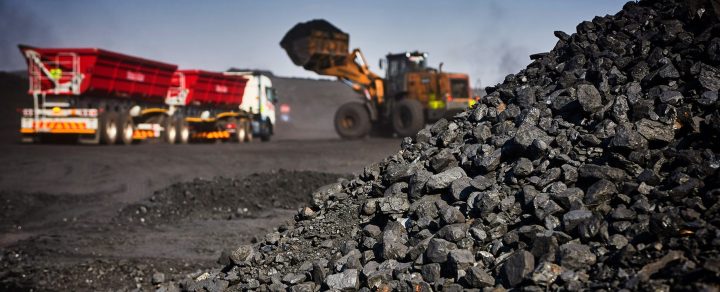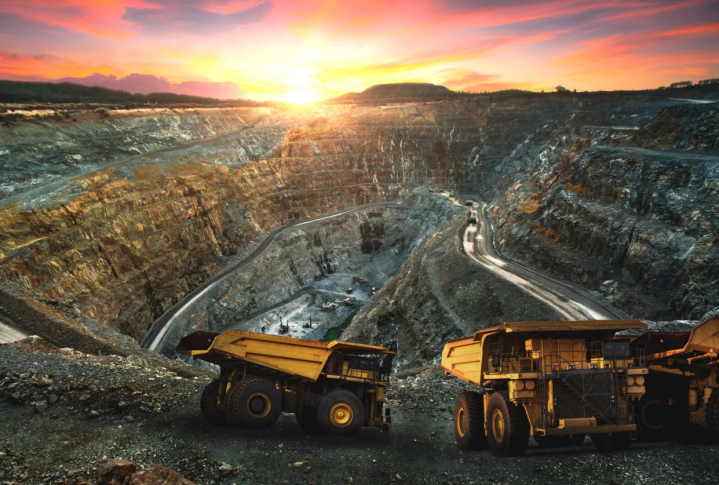PWC ANNUAL REVIEW
King Coal still rules as a top revenue earner for global mining companies

Russia’s invasion of Ukraine saw the fossil fuel jump back to the top of the moneymaking pile — even as banks cut off funding for new projects.
Last year, for the first time in almost a decade, coal was the biggest revenue earner for the world’s top 40 mining companies, according to consultancy PwC’s annual review of the industry.
“The Top 40’s total revenue of $711-billion in 2022 was broadly consistent with last year’s top-line result. However, the share of revenue from different mining commodities changed. For the first time since 2013, coal was the largest contributor to total revenue across the Top 40, rising from 23 to 28%. This increase was largely price-driven, with average spot prices in some cases doubling across the year,” said the report, released on 7 June.
This was largely a consequence of Russia’s unprovoked invasion of Ukraine and is part of the lingering economic fallout from its aggression.
It also points to an emerging coal conundrum: demand spiked at a time when banks were increasingly reluctant to fund new projects involving the fossil fuel and as major mining companies dumped it from their portfolios.
The report pointedly noted that in 2012 “… 19 of the Top 40 miners earned revenue from coal. Last year, only 11 did. Yet coal was the industry’s biggest revenue generator in 2022, reflecting the disconnect between short-term price movements and long-term strategic positioning.”
Energy challenges
For now, coal prices look to remain elevated as this disconnect widens and renewable alternatives — which rely on the mining sector to produce “green metals” — do not fill the gap fast enough.
“The energy challenges that the war in Ukraine has created, on one side, and on the other side the total adversity to investment in new coal means that we’ll have shortages and therefore prices will continue to stay high,” Andries Rossouw, PwC Africa mining leader, told journalists during an online presentation of the report.
Among other things, last year’s spurt in coal demand has further fuelled the flames that are burning our planet.
The US National Oceanic and Atmospheric Administration said on 5 June that CO2 levels measured at its Mauna Loa Atmospheric Baseline Observatory in Hawaii “averaged 424.0 parts per million (ppm) in May, the month when CO2 peaks in the Northern Hemisphere. That is an increase of 3.0 ppm over May 2022, and represents the fourth-largest annual increase in the peak of the Keeling Curve.”
The Keeling Curve is a daily record of global atmospheric carbon dioxide concentration maintained by the Scripps Institution of Oceanography at the University of California San Diego. The US National Oceanic and Atmospheric Administration said this “continued a steady climb further into territory not seen for millions of years … Carbon dioxide levels are now more than 50% higher than they were before the onset of the industrial era.”
But it’s not all gloom and doom.
At the same time, demand is soaring for green metals critical for the energy transition and is set to rise further. Coal might be king on the revenue front for global mining, but it will be dethroned. The report forecasts copper will reclaim the top spot in 2023.
“Demand for critical minerals has also grown to support production of renewable-energy technologies and electric vehicles. As a result, the commodity mix of today’s Top 40 is more diverse than it was a decade ago,” the PwC report noted.
Demand for critical minerals will come from governments and the private sector.
“As more governments try to secure supplies of critical minerals in tightening markets, we are seeing countries emerge as buyers. The concept of a strategic reserve has precedent in materials that are essential for traditional energy systems; examples include the US’s strategic petroleum reserve and uranium reserve.
‘Resource nationalism’
“As governments consider their future needs for critical minerals, they may seek to establish strategic stocks of these resources, too, as evidenced by government-backed procurement activity in the EU and India,” the report said.
Against this backdrop are signs of a rise in what is often dubbed “resource nationalism”. Chile’s government has announced plans to nationalise the lithium industry.
“Given that Chile is the world’s second-largest lithium producer and hosts the largest lithium reserve base, the proposed interventions would likely affect global supplies of lithium.”
Governments are also offering incentives to the mining industry to spur the green energy transition.
The US Inflation Reduction Act (IRA) — the largest piece of climate legislation in US history – offers $370-billion in spending and tax credits to support the transition.
“The IRA presents vast opportunities … Though miners can’t physically move their mines to the US, they can make changes to their operating processes, investment plans, offtake arrangements, processing routes and workforces to capitalise on incentives.”
The Keeling Curve might start moving in the right direction if global mining and wider economies can get this stuff right. DM
To read all about Daily Maverick’s recent The Gathering: Earth Edition, click here.


















Comments - Please login in order to comment.